Tulum: Beaches ruined by rotten seaweed along pristine beaches in Mexico
For years, this tourist hotspot has relied on a simple, effective formula. Good food, cheap booze and the world’s best beaches. The latter is now a lie.
It’s been five years since I swam in what can only be described as the most beautiful beach in the world.
Framed by ancient ruins, cenotes and an infestation of friendly Iguanas, Tulum’s coastline was a clash of vibrant colours. An ancient walled city descending in to the white sands below. A swell of green and blue lapping at the shore line as holiday-makers took shelter from the harsh sun under brightly coloured umbrellas.
It was an Instagrammer’s dream, a natural wonder, and a place that lived up to every bit of my desktop wallpaper.
So when my friend told me about her upcoming trip to Mexico’s Riviera Maya, a visit to Tulum’s world famous archaeological site was at the top of my ‘to-do’ list.
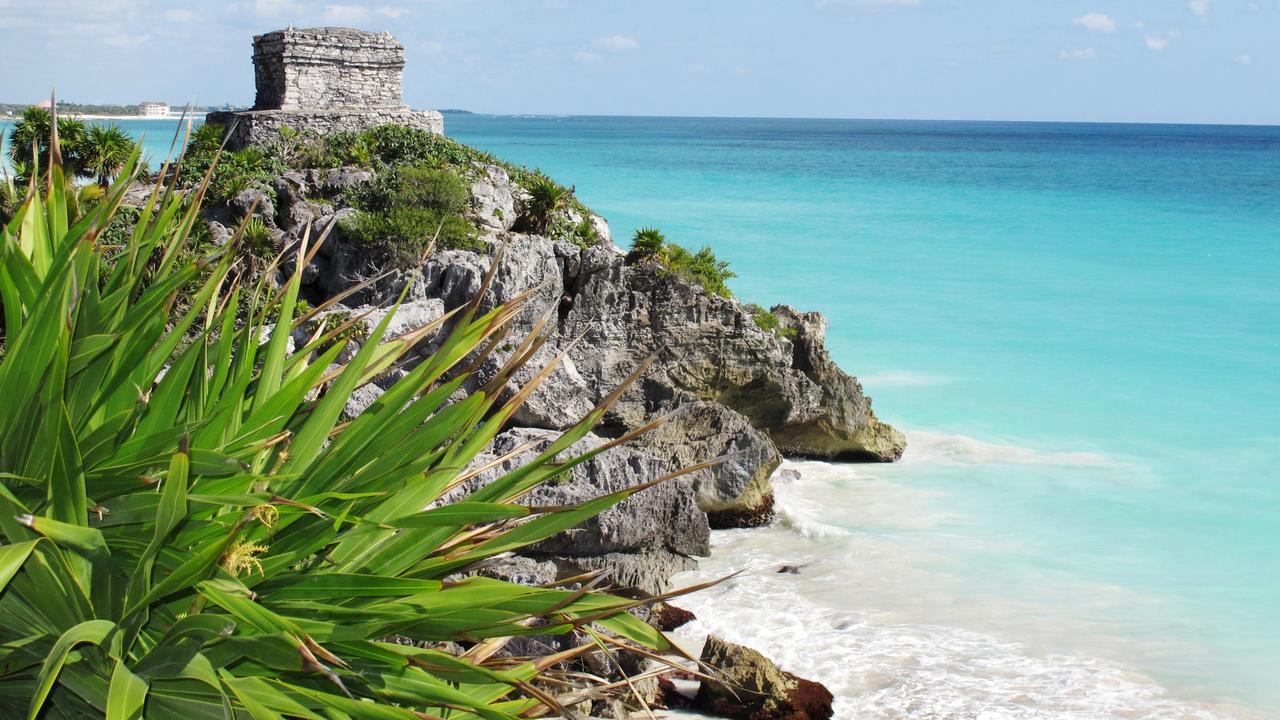
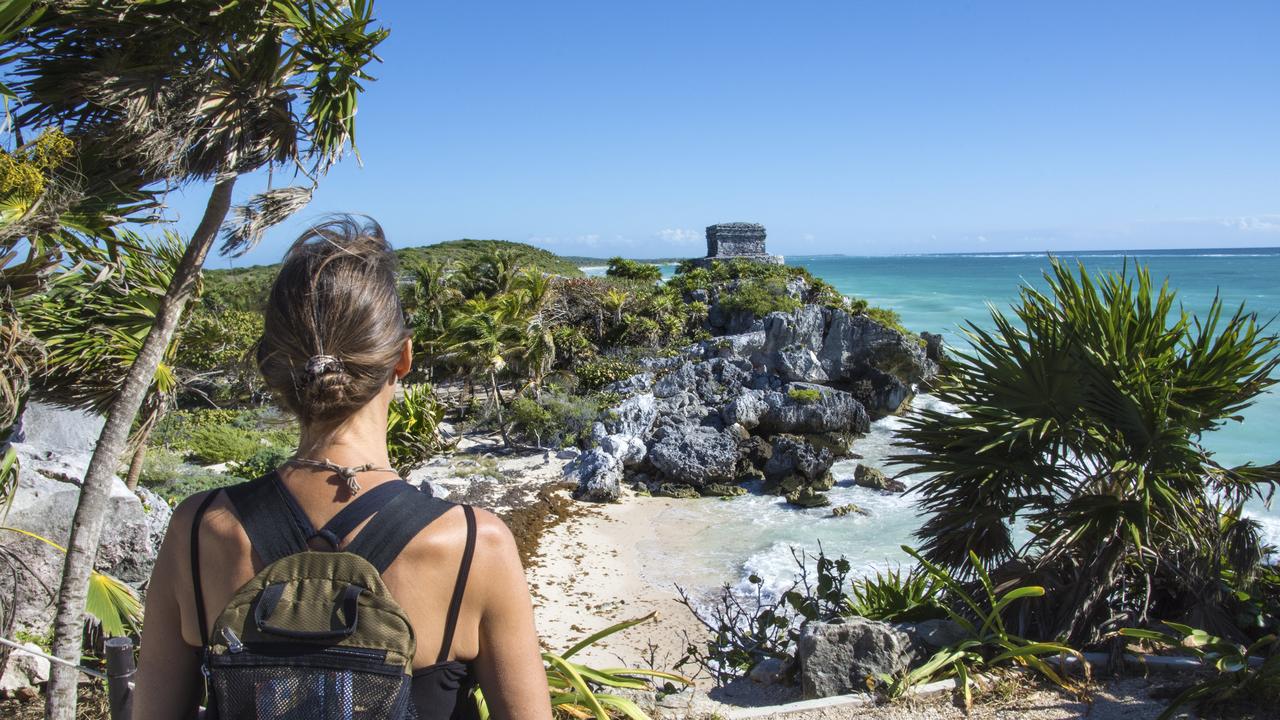
However, after three weeks of lapping up the Caribbean sun, and documenting every cocktail and taco she consumed on Instagram, the beauty of Tulum failed to gain a mention.
“How the hell was Tulum,” I asked when she returned home. “Did you just die?!”
“Mate, it was disgusting,” she replied. “It smelt like rotten eggs. I’ll send you a photo.”
My phone buzzed in my hand, I put her on speaker and opened the text message attachment. Shock. Horror.
A dank swirl of brown water lapped at an almost empty beach. A single sunbather sat alone, headphones in and facing away from the breaking waves.

In the five years since my visit, Mexico’s most famous and lucrative coastline has copped an unwelcome visitor.
An infestation of rotting seaweed has moved north from Brazil, settling in to the increasingly warmer waters of the Caribbean.
Mounds of the stuff, known as sargassum, has turned the crystal clear waters synonymous with the Gulf Of Mexico into what looks like a cesspit.
Smelling of rotten eggs, the weed has blanketed the white sands from Tulum all the way along the coast to Cancun.
Yet flip through a brochure, or even jump on the official tourism website, and you’d have no idea the extent the region has been savaged by this seaweed.

The tragedy, which has devastated the region for the past four years, has cost more than $17m to try and clear 500,000 tonnes of the weed from Tulum’s beaches.
The white sand that snakes along the Riviera Maya coastline provides half of the country’s tourism revenue, with no amount of money or manpower able to stop the growing devastation.
Resorts desperate to clear patches of sand for guests employee workers who bulldoze, shovel and rake the beaches day and night, and install nets in the water to catch the weed as it floats to shore.
But the costly exercise is proving futile, with experts saying the infestation of weed will only get worse with time.
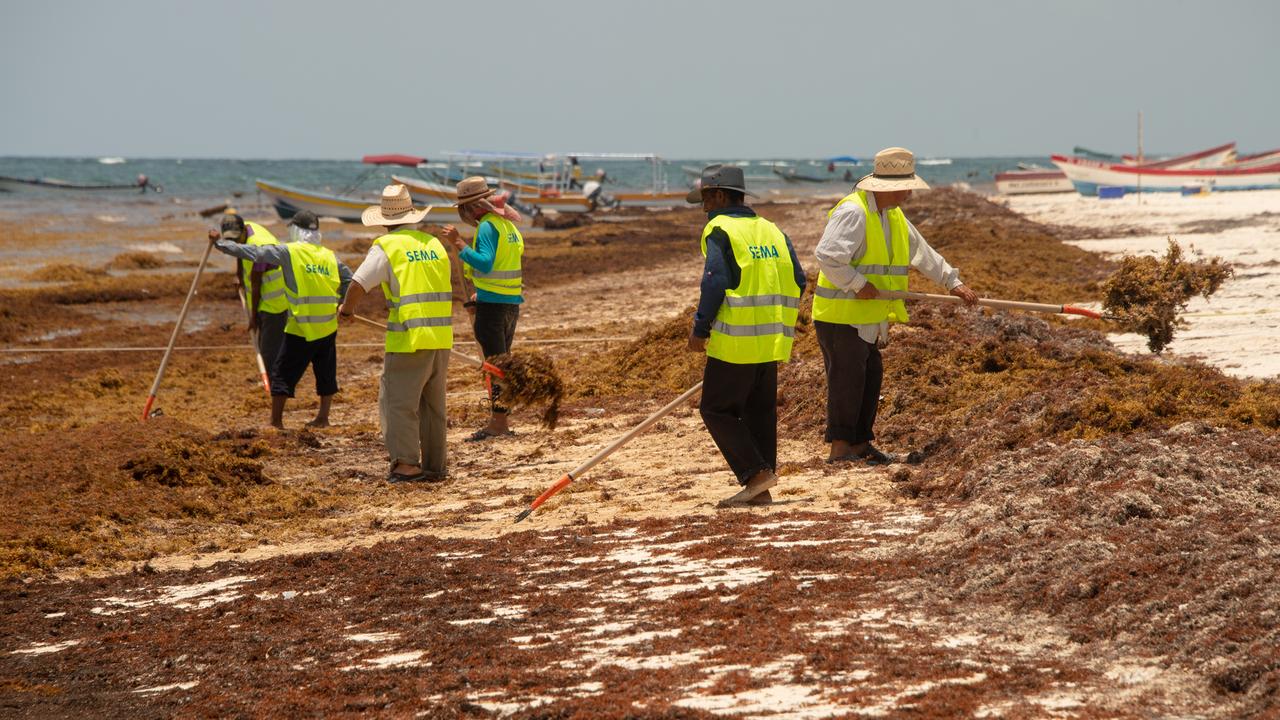
In an interview with the Independent, Chuanmin Hu, a professor of oceanography at South Florida University’s College of Marine Science, said “global climate change … increased air deposition, or increased nutrient source from rivers” may have increased the recent large amounts of sargassum destroying the region.
However, the exact cause is still up for debate.
Some scientists have cited climate change and its impact on precipitation and ocean circulation. Others believe an increase in deforestation and fertiliser used in Brazil’s Amazon, which flows in to the ocean, has sped up the algae growth.
“The ocean’s chemistry must have changed in order for the blooms to get so out of hand,” Dr. Hu added.
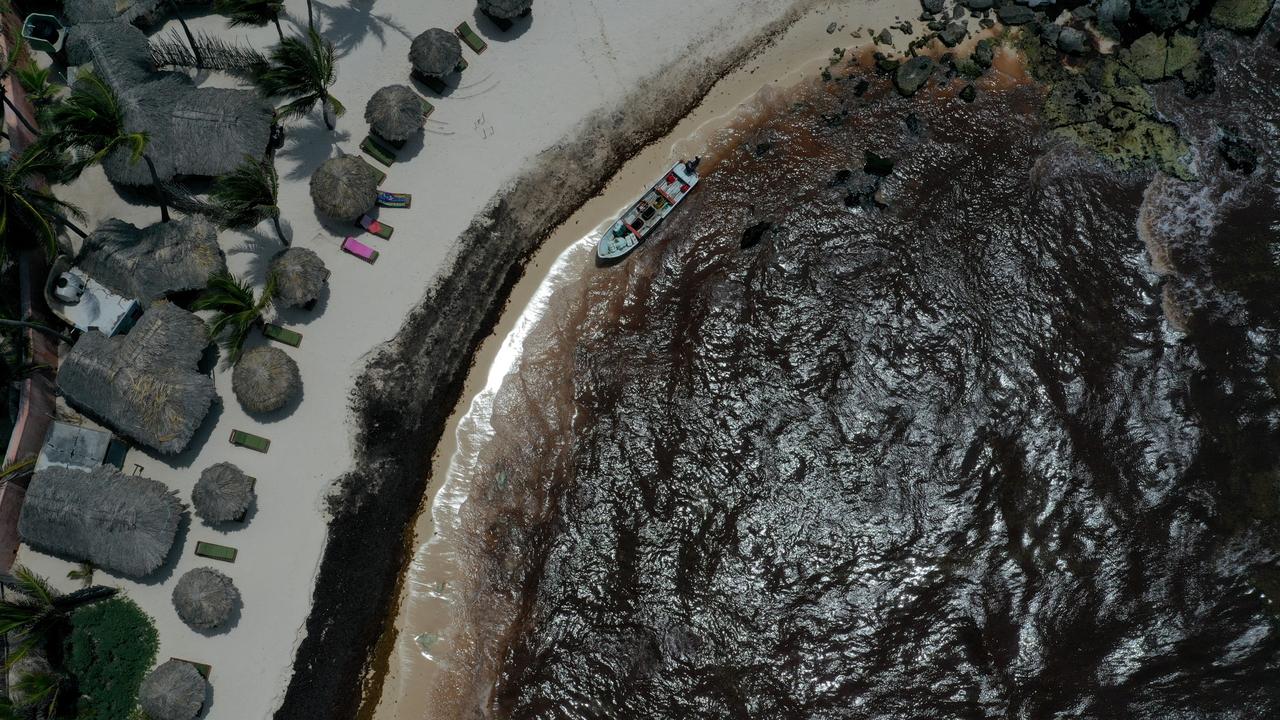
The tourism industry is in panic mode, fearing the continued growth of weed could severely affect the local industry as hotel occupancy rates start to drop.
In June, the state declared an emergency over the issue, describing it as an “imminent natural disaster”.
With tourism being the backbone of the region’s economy, employing around four million, resorts are pushing discounts on rooms and other incentives to try and bring the traveller dollar back to famous beaches.
According to Bloomberg, this year the weed has delivered the biggest blow of all.
Hotel occupancy in the region fell 3.4% in the first three weeks of June, with other locations offering discounts on rooms of as much as 20% and transporting guests to unaffected beaches during peak season.
Air traffic to Cancun, the biggest airport in the region to access the Riviera Maya, registered its weakest growth for the month since 2011.

Locals desperate for a solution have written in to local media outlets, pleading with government officials for help to resolve the stinking mess swamping the coast.
“Most months of the year our beaches have lost the crystalline colour of their waters and their shades of blue and turquoise green; sea grass and fish die because of the lack of light and oxygen, the turtles and the coral reef are also affected,” one letter read, according to Turquesa News.
“It produces an acid gas with a rotten egg smell [when it decomposes] that can be harmful to human health.”
But despite the money being pumped in to bandaid solutions, their pleas are falling on deaf ears.
Mexican President Andres Manuel Lopez Obrador has repeatedly downplayed the seaweed invasion, instead saying the problem is “controllable’’.
But according to one watchdog group, the worst is yet to come.
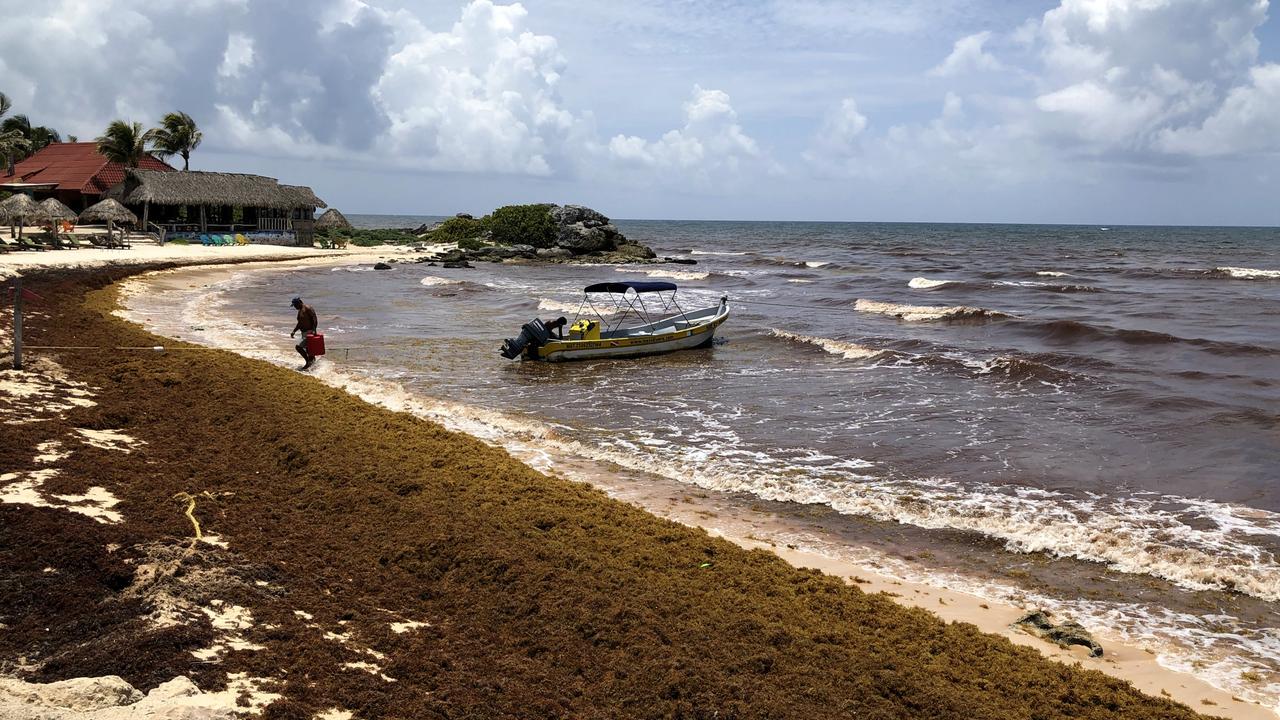
In an interview with Wall Street Journal, Susana Enríquez, a reef systems expert at Mexico’s National Autonomous University in Puerto Morelos, said a floating island of seaweed the size of Jamaica is bobbing just offshore.
“I have never seen sargassum arrivals in such massive quantities,” she said.
“Its ability to destroy already vulnerable ecosystems is profound. It’s more than just a beach problem,” she said, adding that sargassum can damage ecosystems like coral reefs by blocking vital sunlight, decomposing, and depleting the water of oxygen.
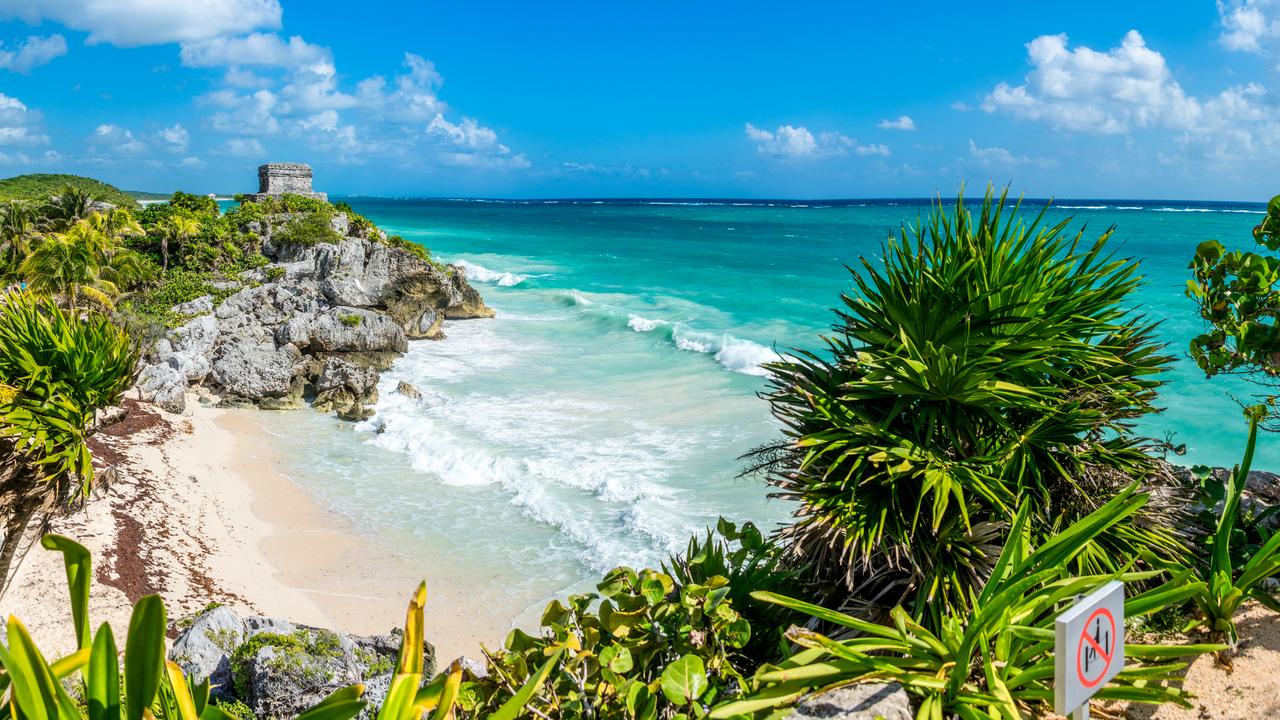
The weed also has possible health implications to humans as well, with research showing sargassum is high in heavy metals, like lead and arsenic, meaning disposal is a major issue.
One dump site where the sargassum is taken is in the jungle, many kilometres away from the ocean. But it is unclear if the decaying mass then seeps into the ground, or evaporates in to the air.
Jose Escalante, who has owned a small hotel in Tulum for eight years, says this isn’t just a local problem — but a sign of where the world is going.
“It’s something that is happening to the world, not just to the region,” he said in an interview with CBS.
“This is just a consequence of the entire planet being in trouble.”




